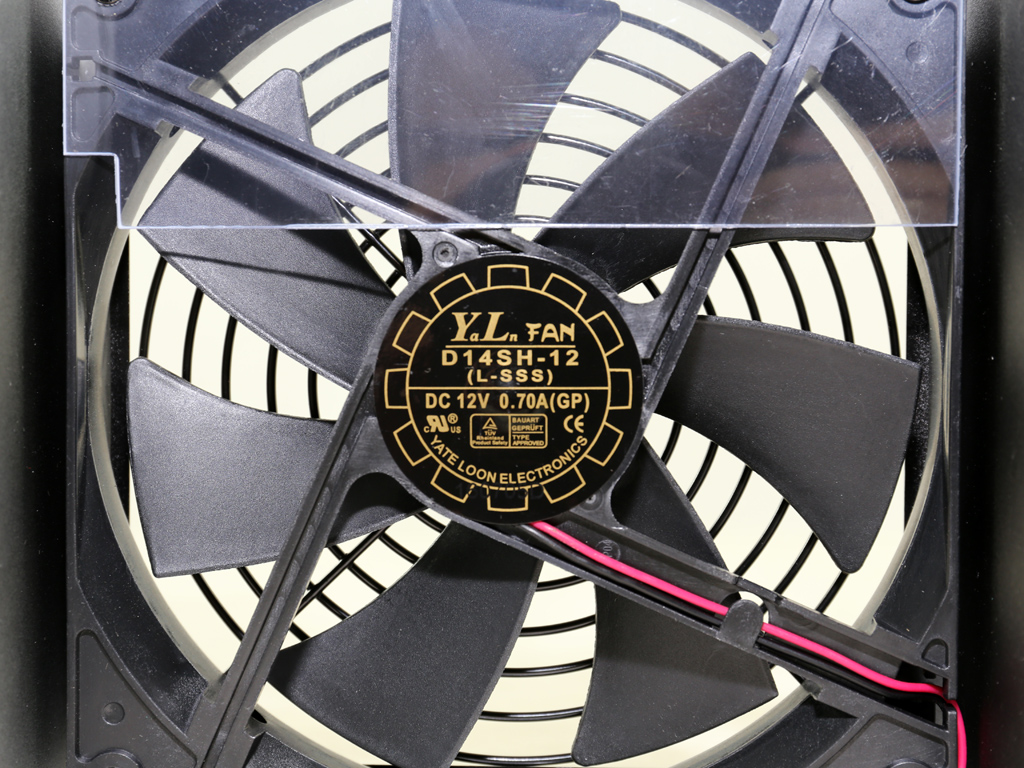Corsair CX750M PSU Review
Corsair's CX line is aimed at users with limited budgets who still want a branded, reliable, and well-supported PSU. Today we're reviewing the second-strongest member of the family, the CX750M.
Why you can trust Tom's Hardware
A Look Inside And Component Analysis
Parts Description
Before proceeding with this page, we strongly encourage you to a look at our PSUs 101 article, which provides valuable information about PSUs and their operation, allowing you to better understand the components we're about to discuss. Our main tools for disassembling PSUs are a Thermaltronics soldering and rework station, and a Hakko FR-300 desoldering gun.
| General Data | |
|---|---|
| Manufacturer (OEM) | CWT |
| Platform Model | PUQ-B |
| Primary Side | |
| Transient Filter | 4x Y caps, 2x X caps, 2x CM chokes, 1x MOV |
| Inrush Protection | NTC Thermistor & Diode |
| Bridge Rectifier(s) | 2x GBU1006 (600V, 10A @ 100°C) |
| APFC MOSFETs | 2x Infineon IPW50R280CE (550V, 11.4A @ 100°C, 0.28Ω) |
| APFC Boost Diode | 1x Power Integrations QH08TZ600 (600V, 8A @ 150°C) |
| Hold-up Cap(s) | 1x Nichicon (400V, 390uF, 2000h @ 105°C, GG) |
| Main Switchers | 2x Vishay SiHG20N50C (560V, 11A @ 100°C, 0.27Ω) |
| Combo APFC/PWM Controller | Champion CM6800TX & CM03X Green PFC controller |
| Topology | Primary side: Double-Forward Secondary side: Synchronous Rectification & DC-DC converters |
| Secondary Side | |
| +12V MOSFETs | 4x APEC AP9990GH-HF (60V, 100A @ 25°C, 6mΩ) |
| 5V & 3.3V | DC-DC Converters: 6x APEC AP72T03GP (30V, 47A @ 100°C, 9.5 mΩ) PWM Controller: ANPEC APW7159C |
| Filtering Capacitors | Electrolytics: Nippon Chemi-Con (1-5,000 @ 105°C, KZE), Su'scon (2-5,000h @ 105°C, MF), 1x Taicon (105°C) Polymers: APAQ, EneSol |
| Supervisor IC | Weltrend WT7502 (OVP, UVP, SCP, PG) |
| Fan Model | Yate Loon D14SH-12 (140mm, 12V, 0.70A, 2100RPM, 140CFM, 48.5 dB(A), Sleeve Bearing) |
| 5VSB Circuit | |
| Rectifier | 1x MBR2045CT SBR (45V, 20A) & CEF04N7G (700V, 4A, 3.3Ω) |
| Standby PWM Controller | On-Bright OB5269CP |
| -12V Circuit | |
| Rectifier | UTC 2SB834L |
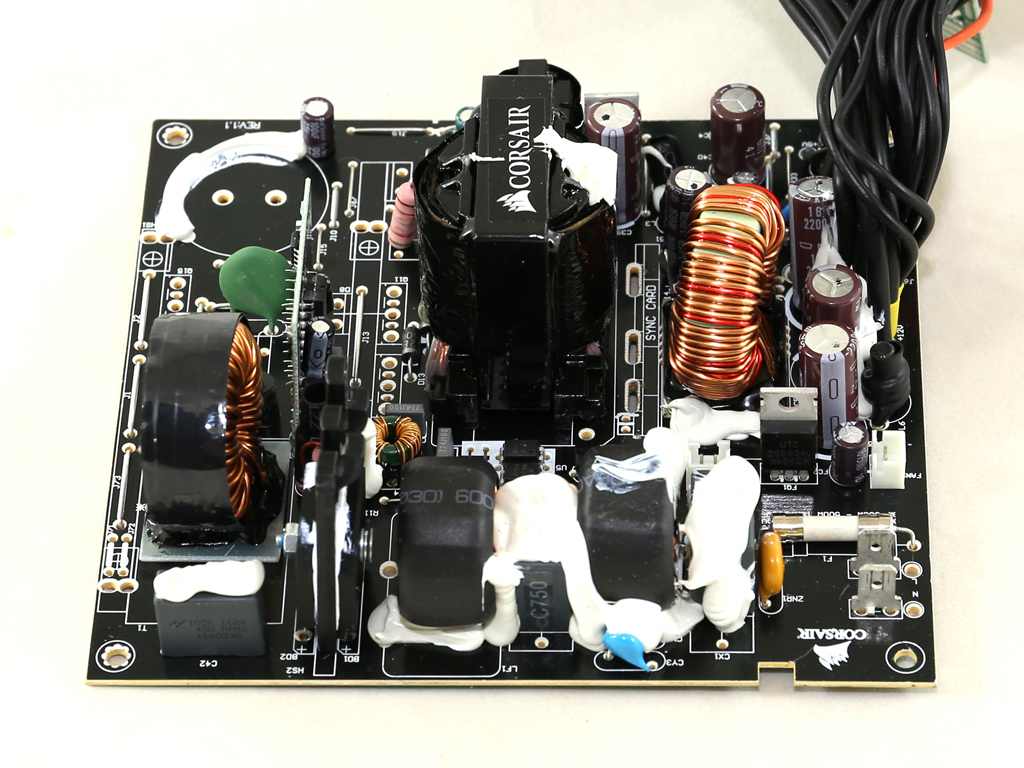

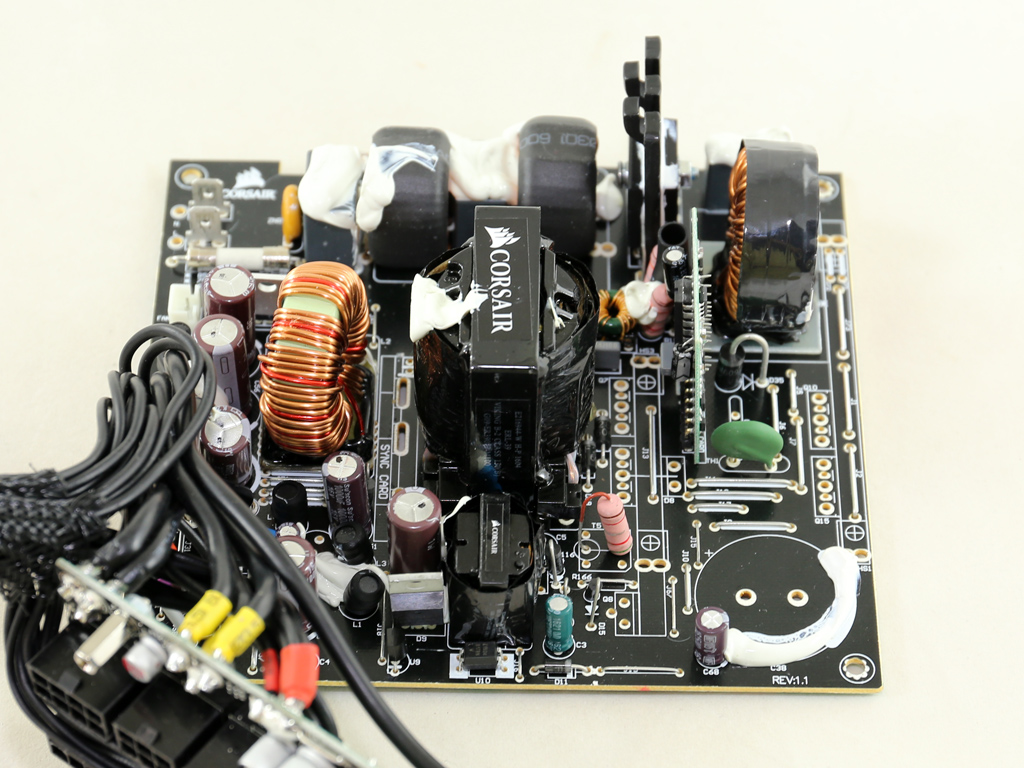
The CX750M is based on a slightly modified PUQ-B CWT platform (a big thanks to the members of a well known PSU forum for reminding me of this), with the number of small changes being dictated by Corsair's engineers in order to improve performance. The design is much more sophisticated than we expected given an 80 PLUS Bronze rating. It employs a double-forward topology on the primary side and a synchronous design on the secondary, with both VRMs installed on the modular PCB for lower voltage drops and minimal energy losses. Moreover, there are no heat sinks on the secondary side, despite a relatively mainstream efficiency certification. CWT seems to be avoiding heat sinks on the secondary side lately, and although this doesn't raise any concerns in high-efficiency Gold, Platinum, and Titanium platforms, it can affect the lifetime of Bronze-rated units under higher thermal loads. CWT's engineers are nevertheless confident in this design, otherwise Corsair wouldn't stand behind it for five years.


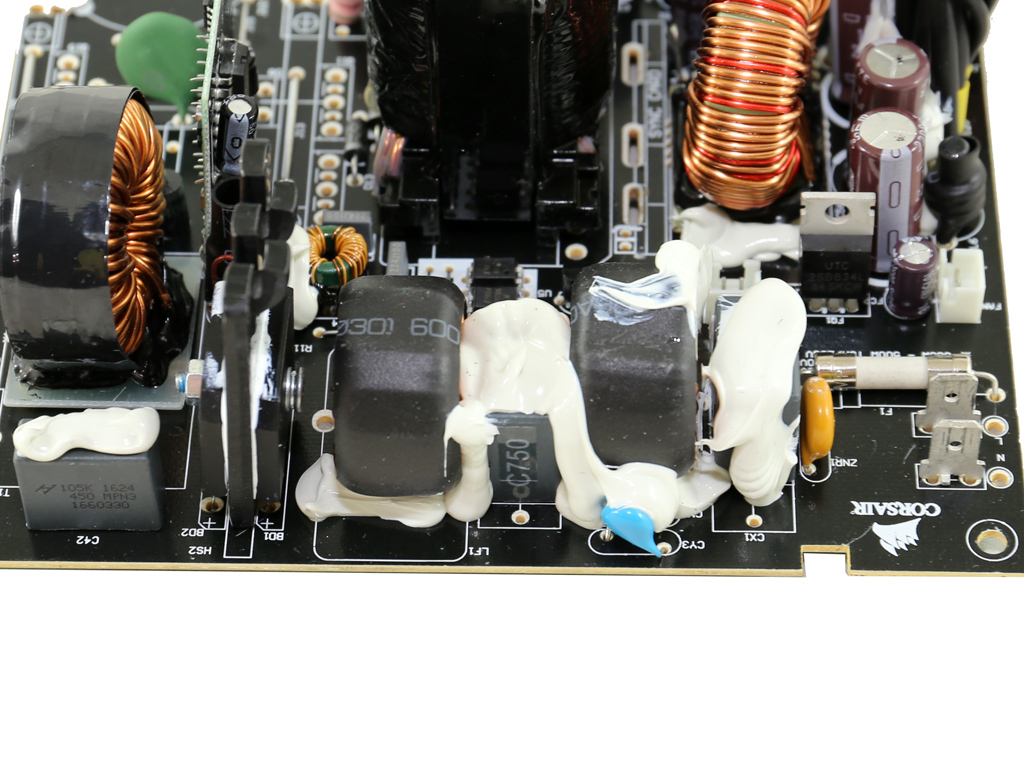
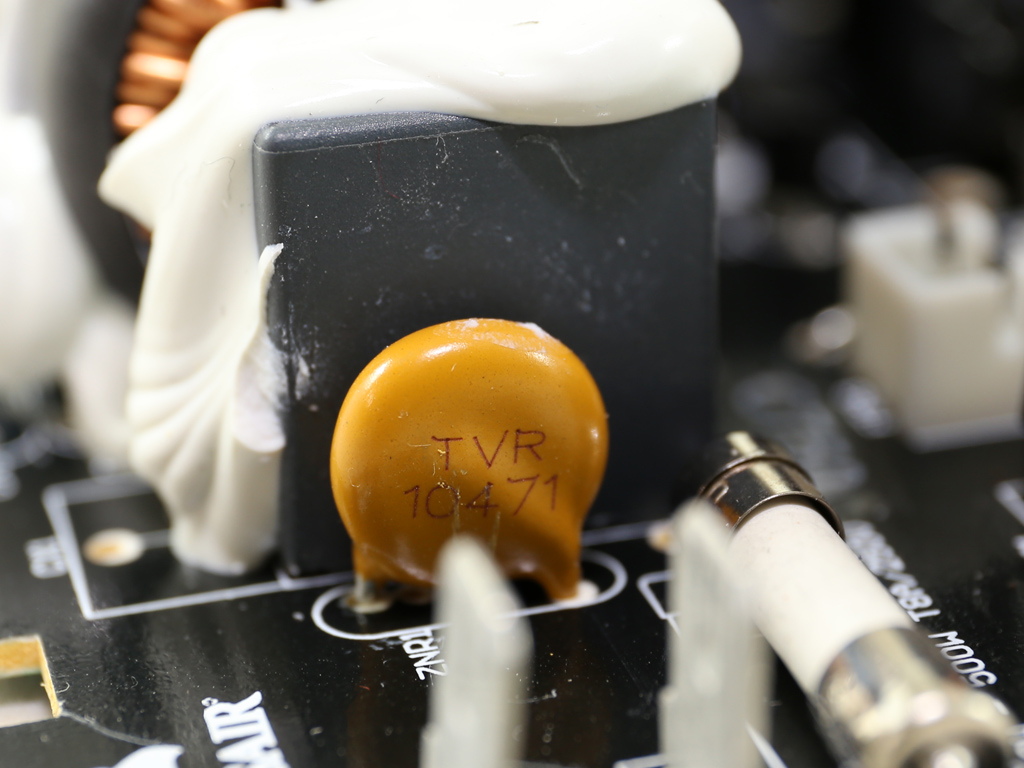
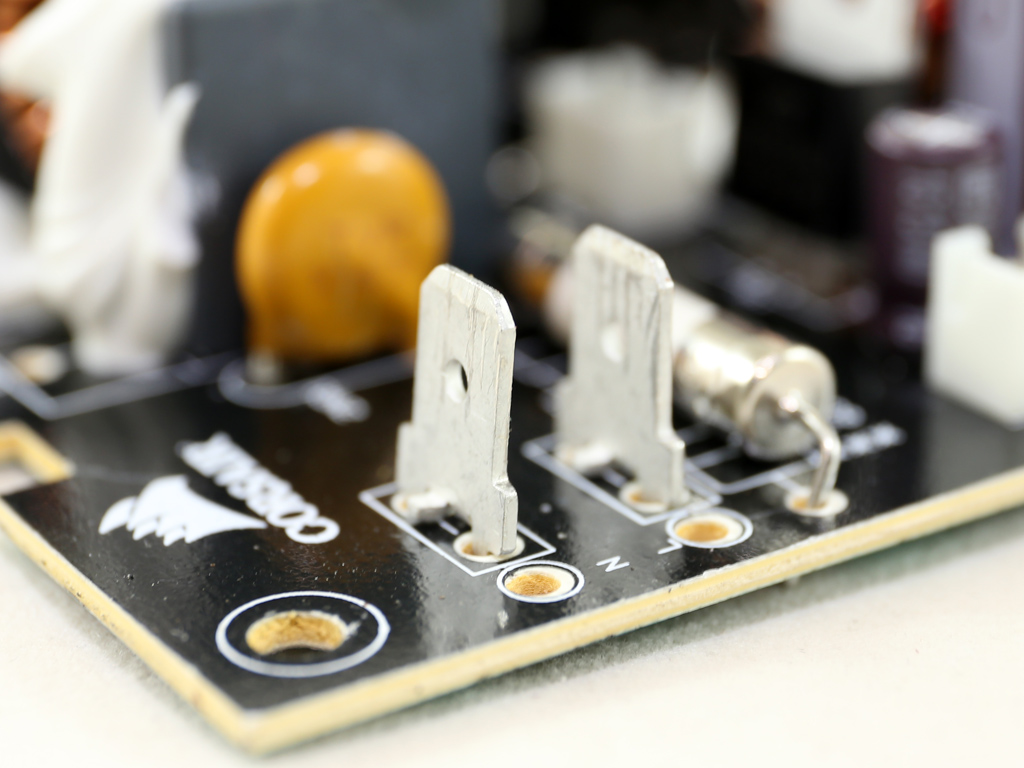
The first part of the transient filter is on the AC receptacle with a pair of Y caps. The second part is on the main PCB and consists of two Y and two X caps, two CM chokes, and an MOV.


The bridge rectifiers are a couple of GBU1006s bolted to a dedicated heat sink. Combined, they can handle up to 20A of current.

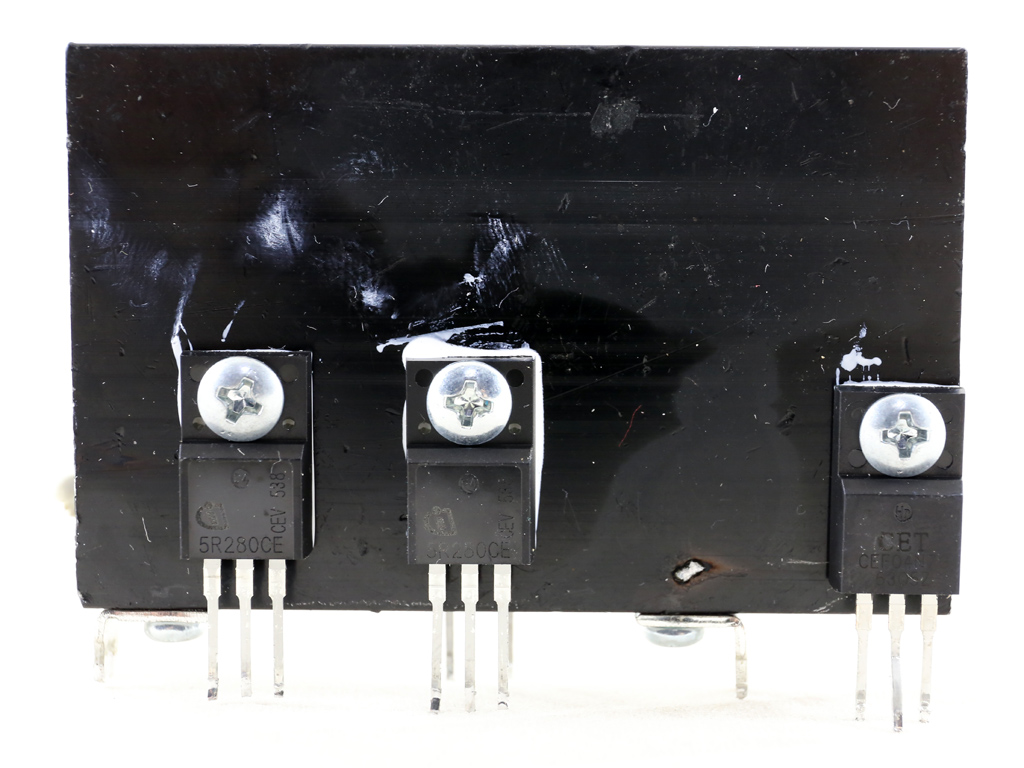



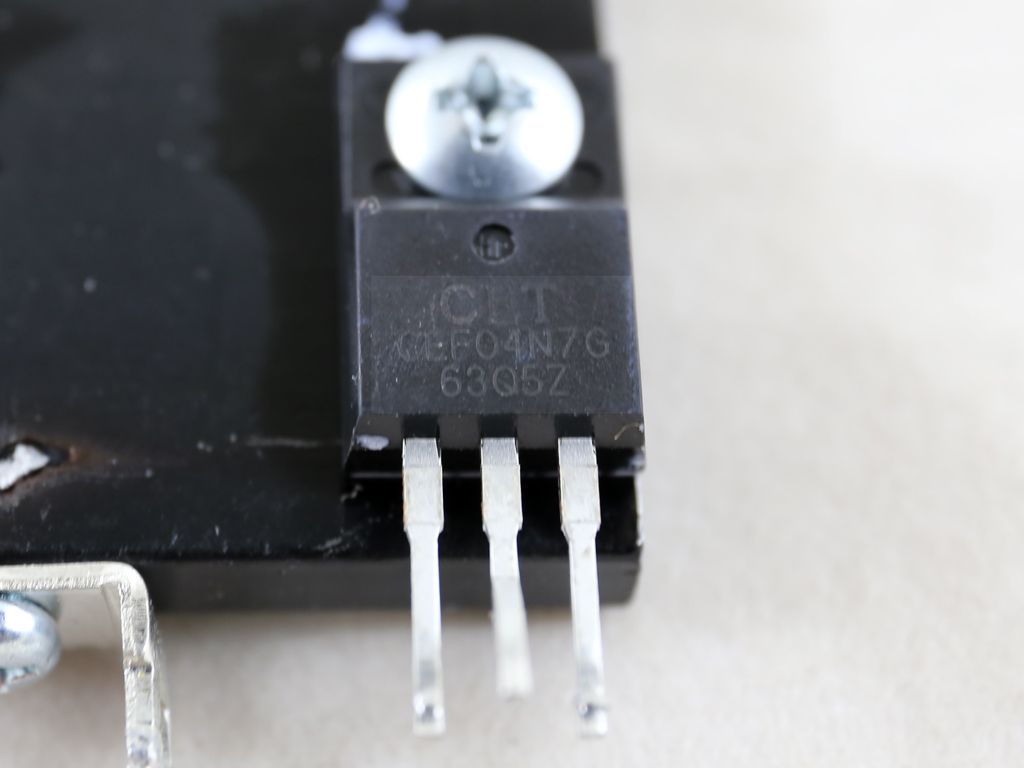
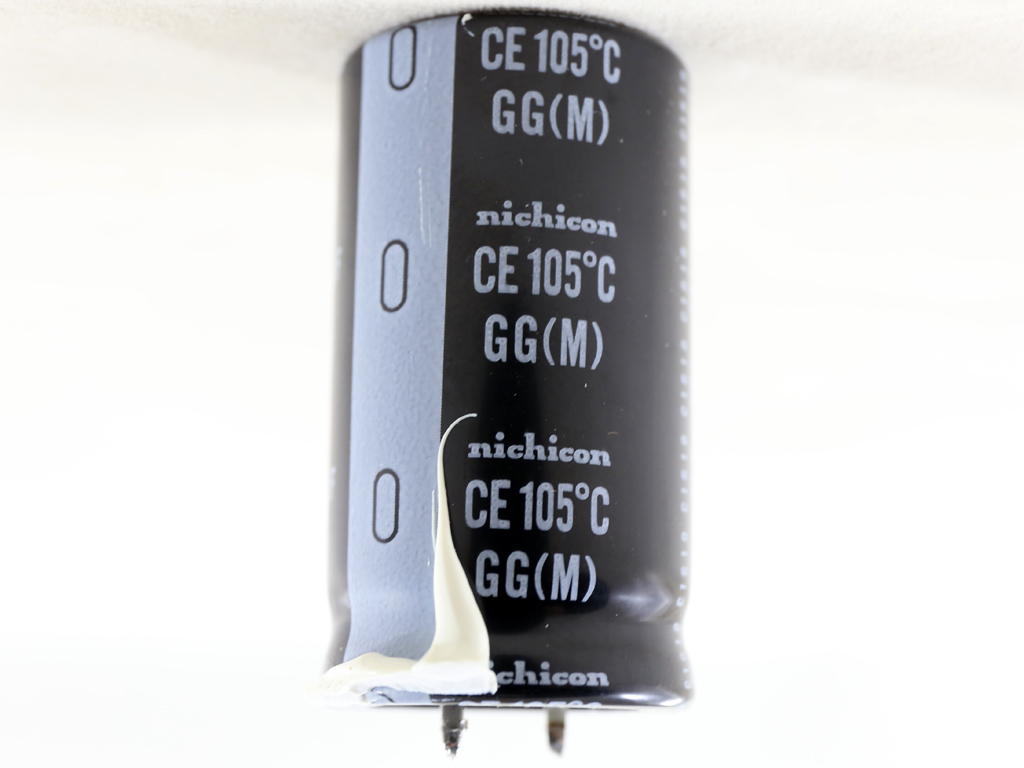
In the APFC converter we meet two Infineon IPW50R280CE FETs and a single QH08TZ600 boost diode provided by Power Integrations. The bulk cap is sourced from Nichicon and its capacity is low for a 750W PSU. As a result, we don't expect the unit's hold-up time to reach 17ms, per the ATX specification's requirement.
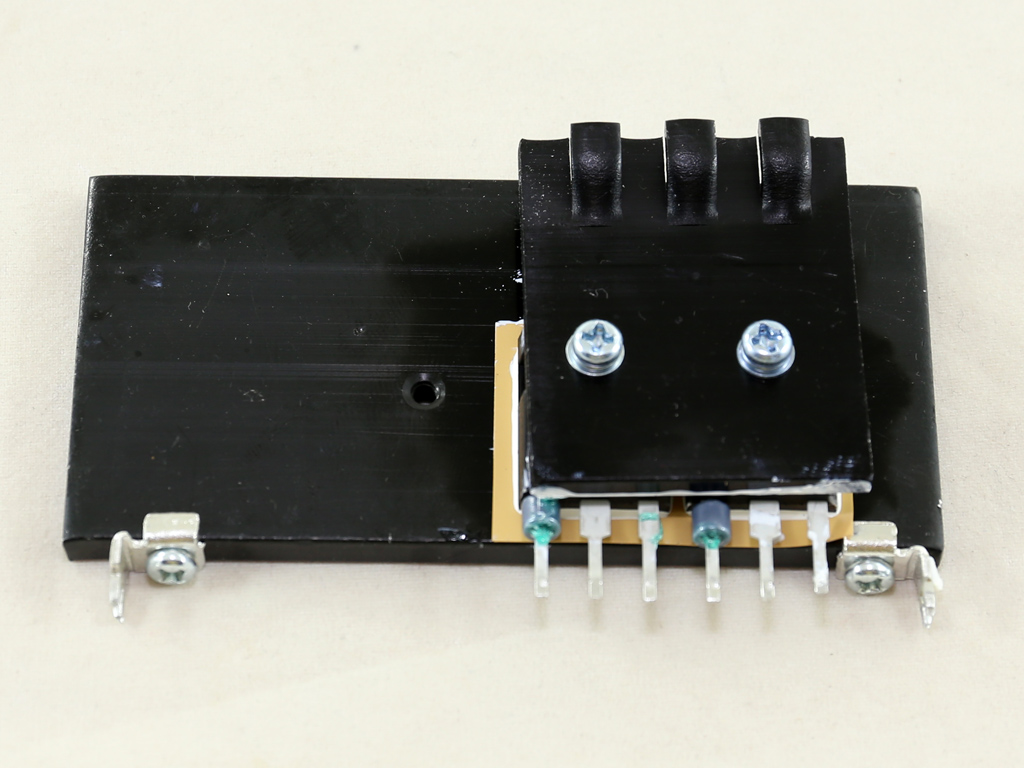
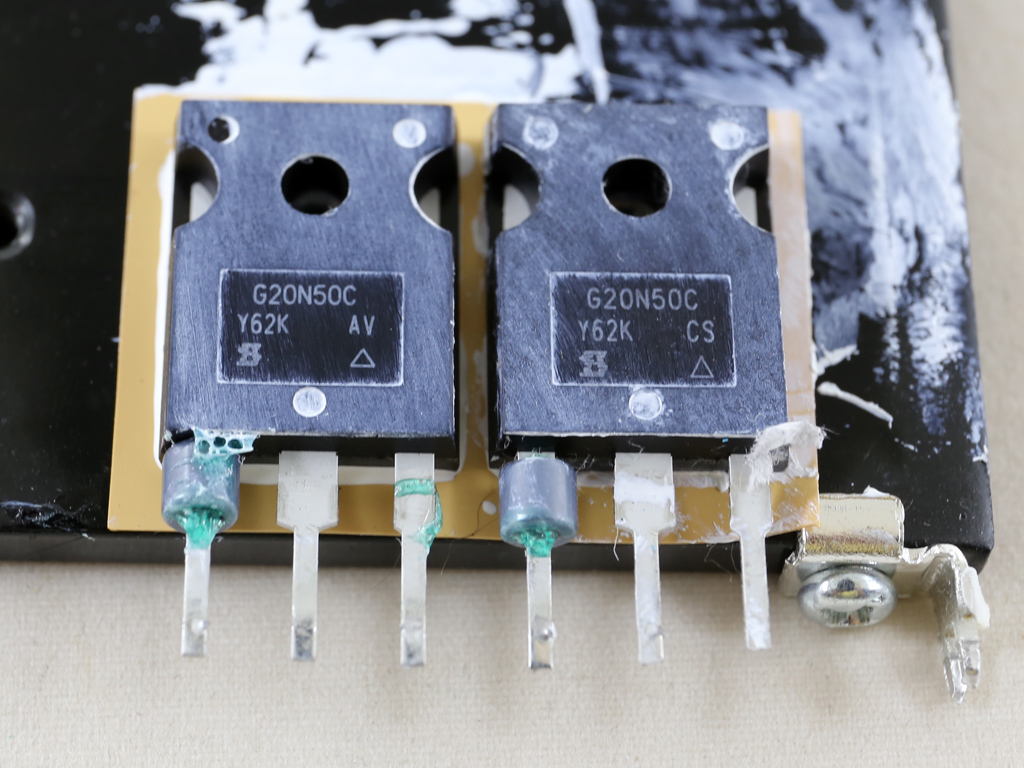


The primary switching FETs are two Vishay SiHG20N50Cs arranged into a double-forward topology. In addition, the combo PFC/PWM controller is a Champion CM6800TX IC, which is quite popular among Bronze-rated PSUs. We've even found it in several low-cost Silver and Gold units.
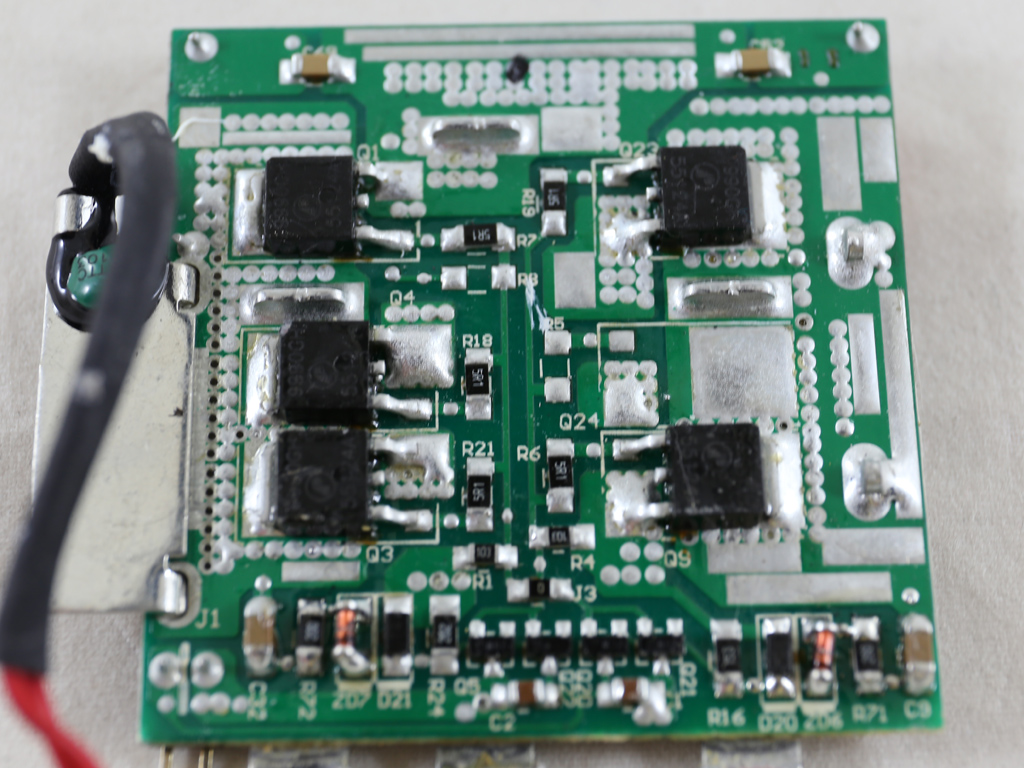
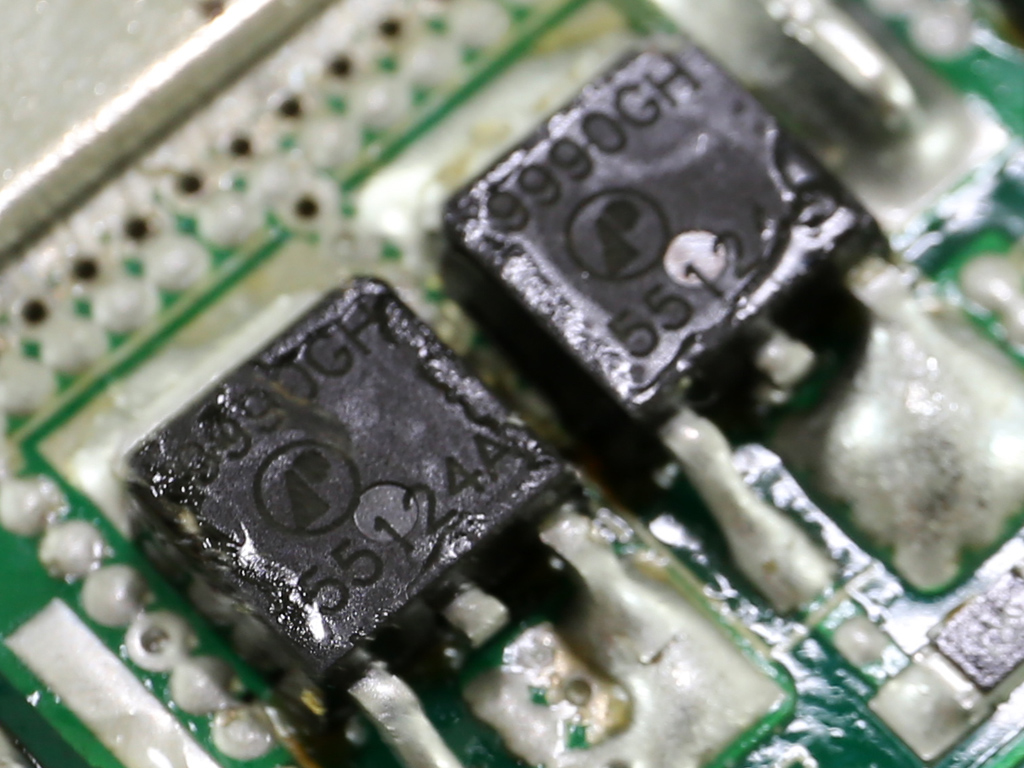
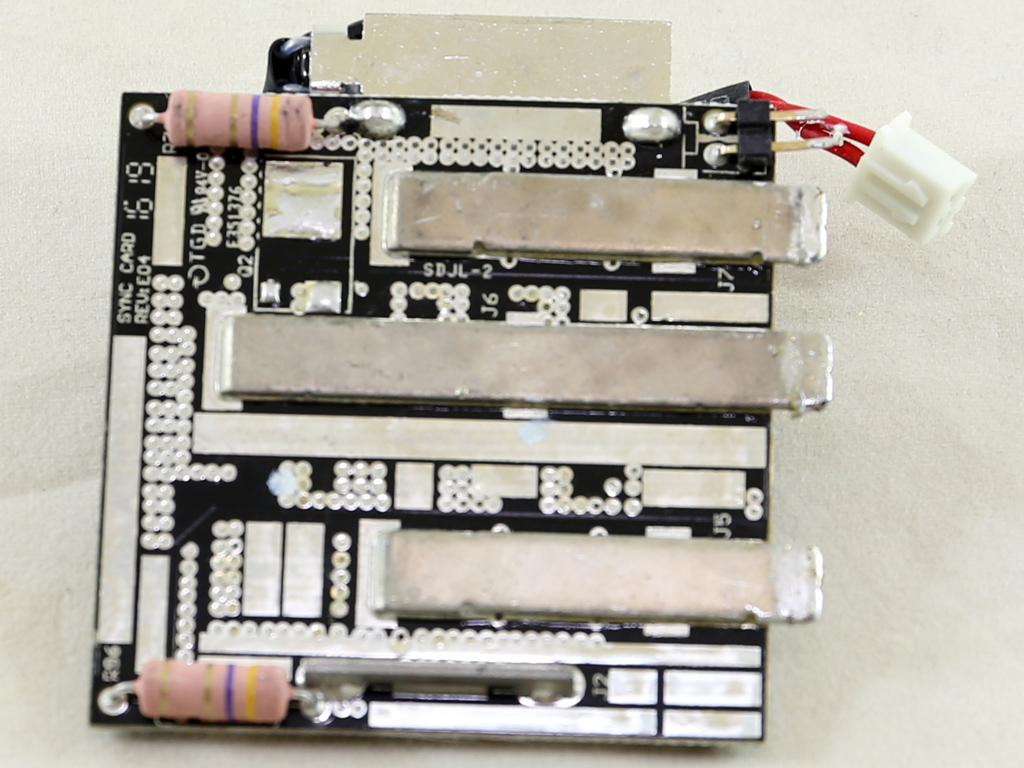
A vertical daughterboard holds the +12V FETs: four AP9990GH-HFs from APEC. Several bus bars are used to cool the FETs and main PCB. Although the cooling appears insufficient for a not-so-efficient 80 PLUS Bronze power supply, we didn't encounter any problems during our extra-tough tests conducted at very high ambient temperatures.
Get Tom's Hardware's best news and in-depth reviews, straight to your inbox.
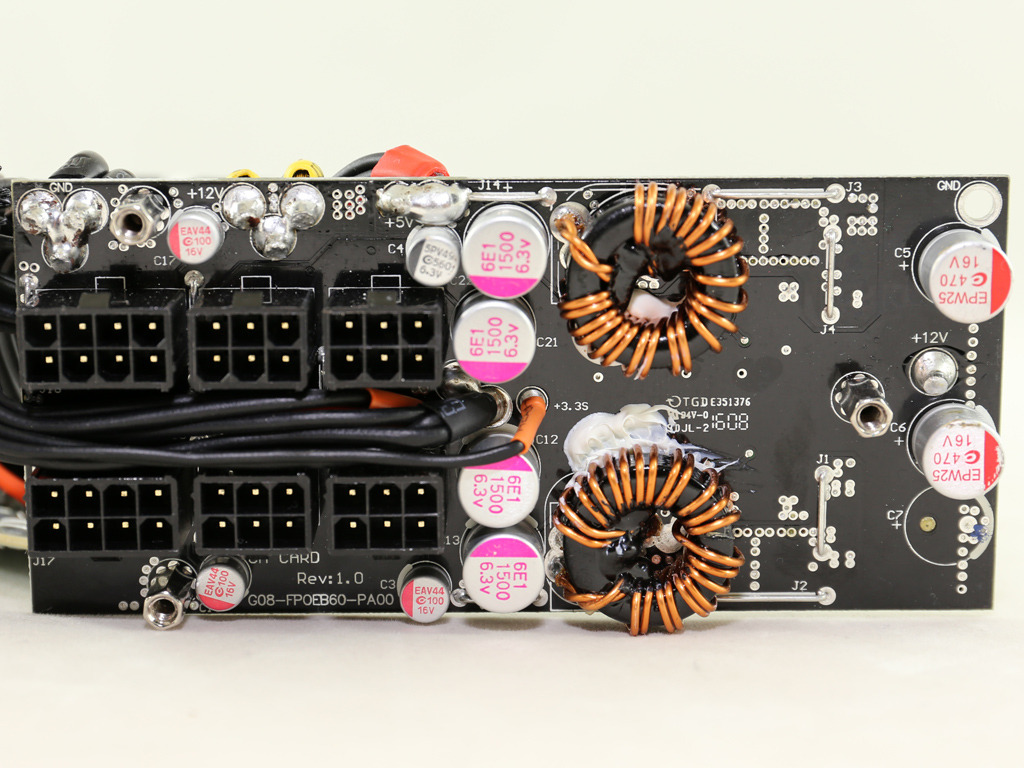

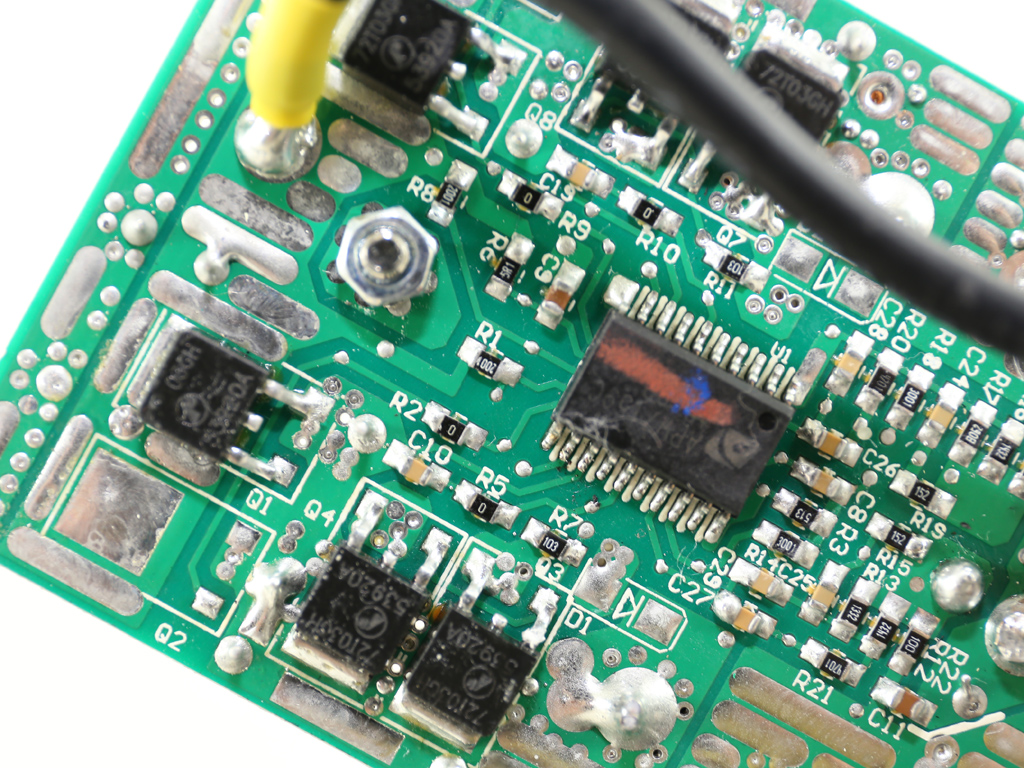
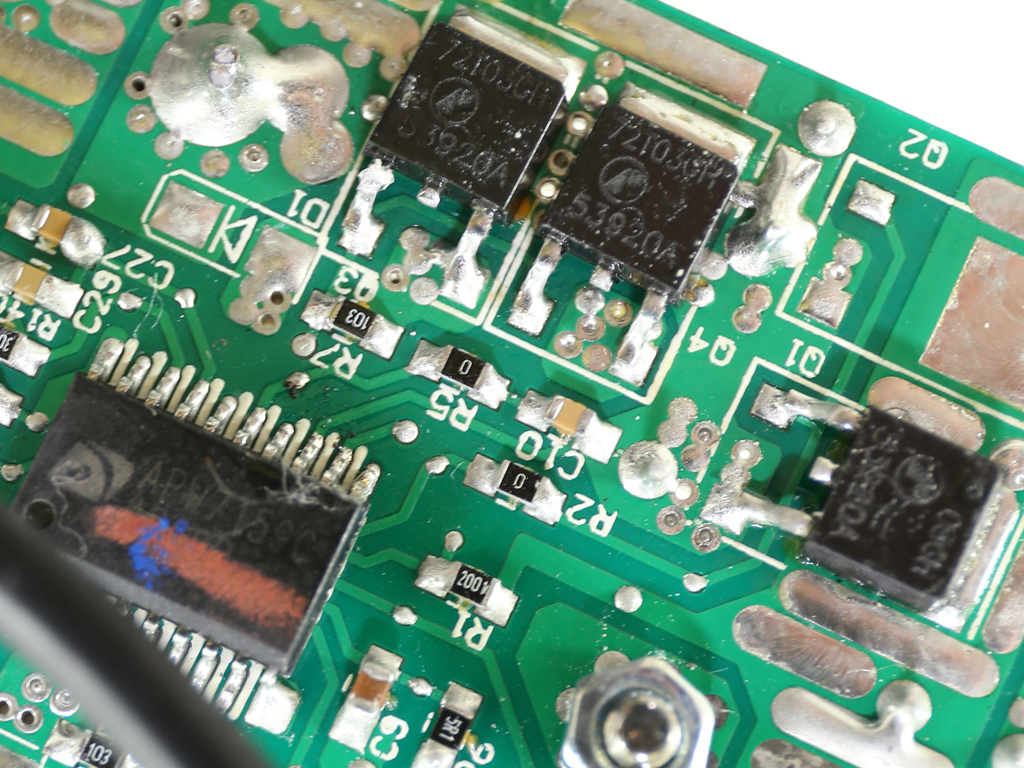
In a Bronze-class PSU, the last thing we'd expect to see would be DC-DC converters, responsible for generating the minor rails, installed directly on the modular board to limit energy losses. This technique is usually reserved for more efficient platforms. Both VRMs use six APEC AP72T03GP FETs, and the common PWM controller is an Anpec APW7159C.



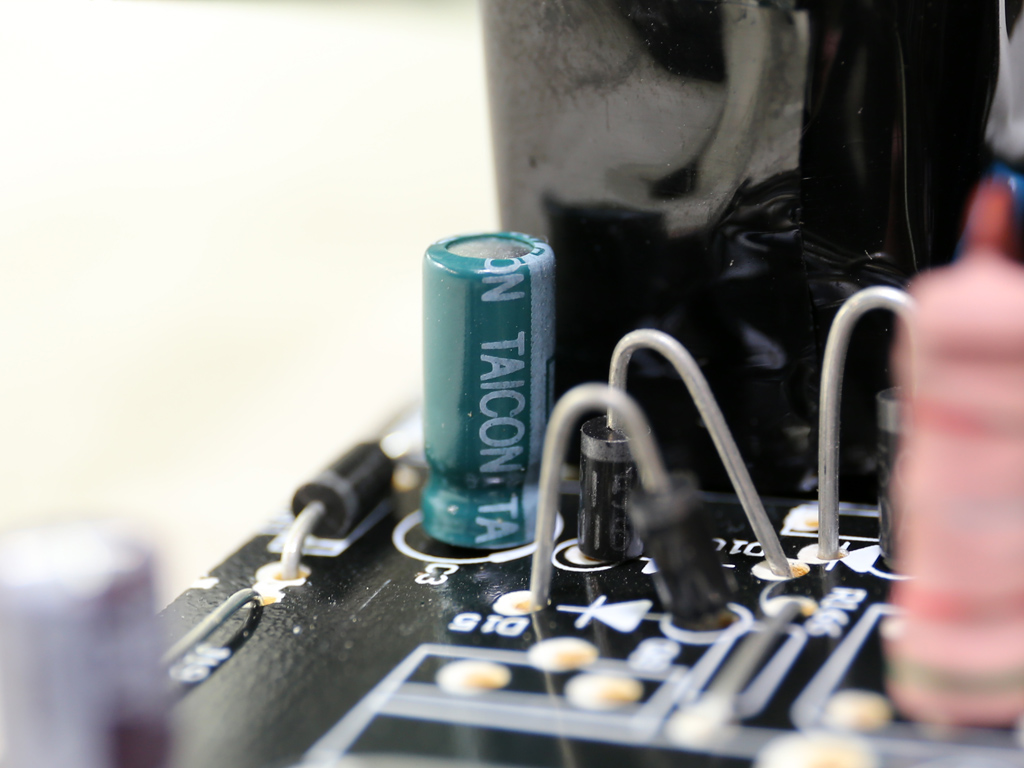
The electrolytic filtering caps are provided by Chemi-Con (105°C, KZE) and Su'scon (105°C, MF). We also spotted a single Taicon (105°C) capacitor.
The supervisor IC is a Weltrend WT7502, which provides only the absolute necessary protections. It doesn't offer over-temperature protection and that's a great shame.
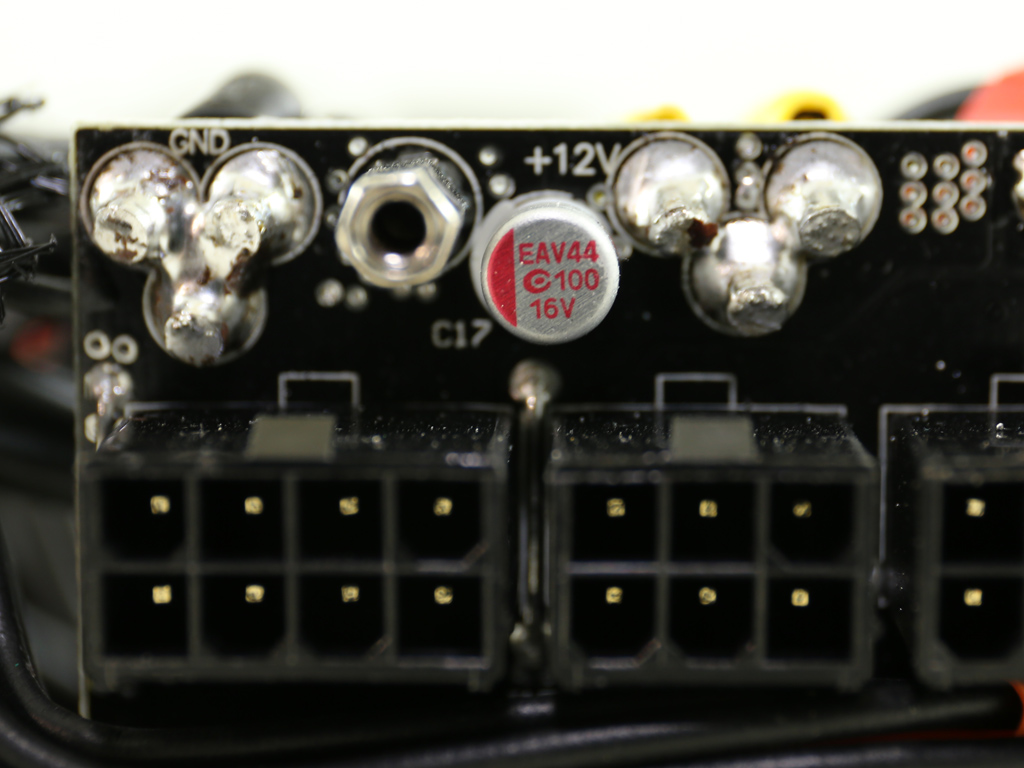
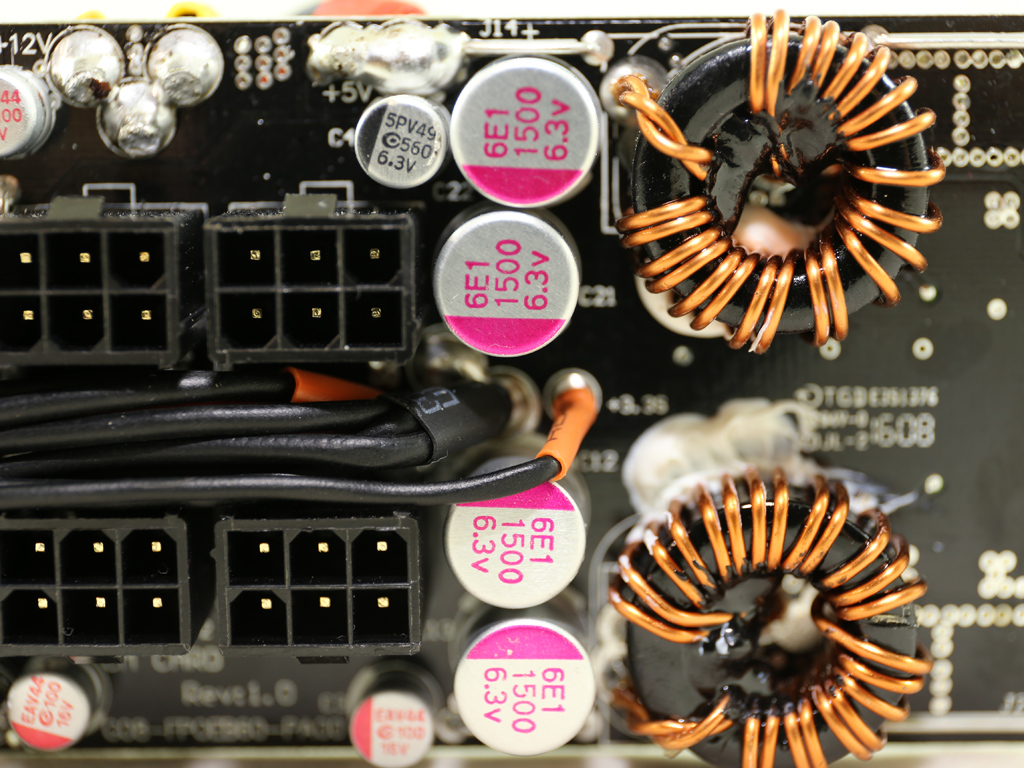
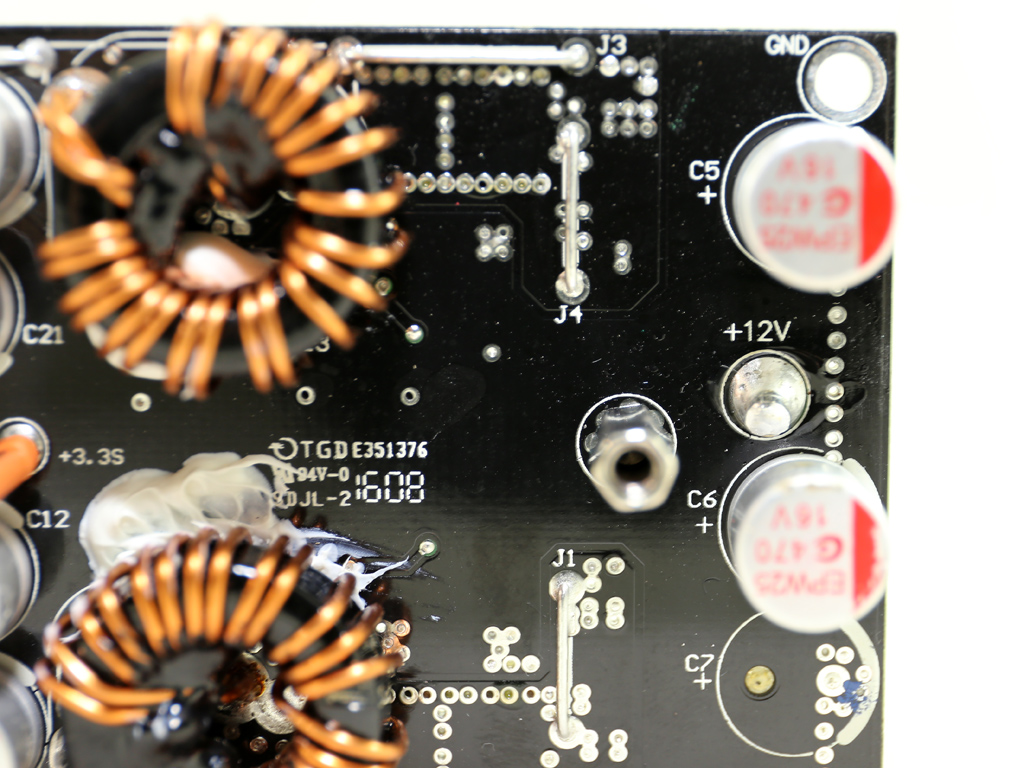
Several polymer APAQ and EneSol polymer caps on the modular board provide extra filtering. Some of them are used by the VRMs of the minor rails, too.
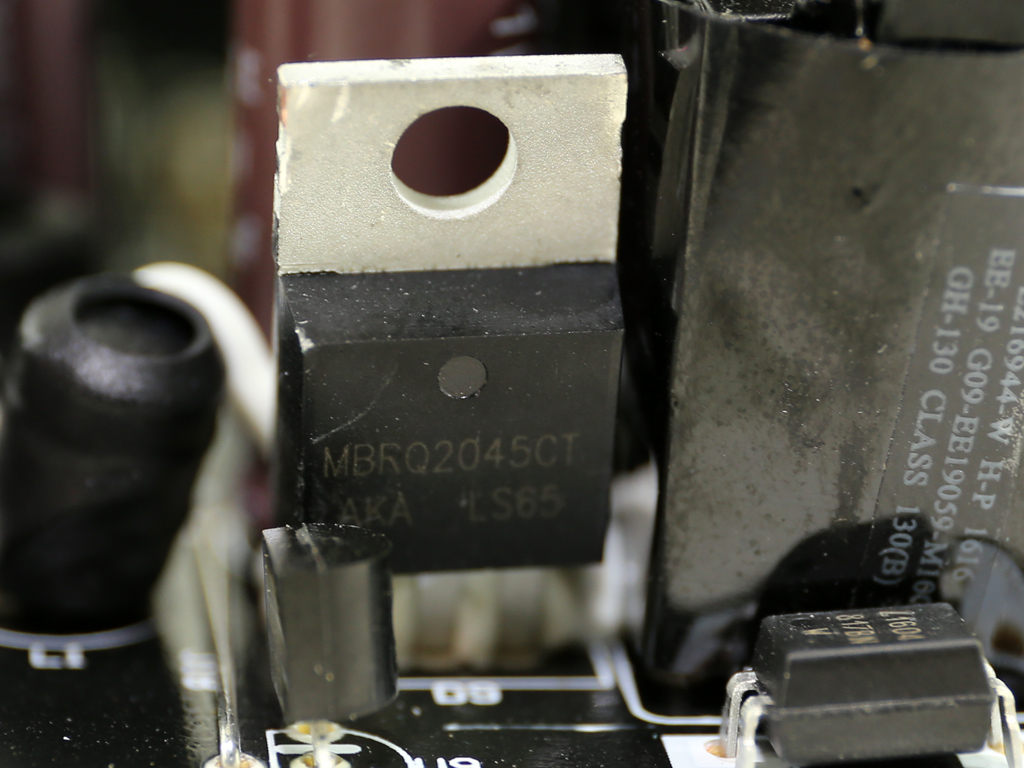
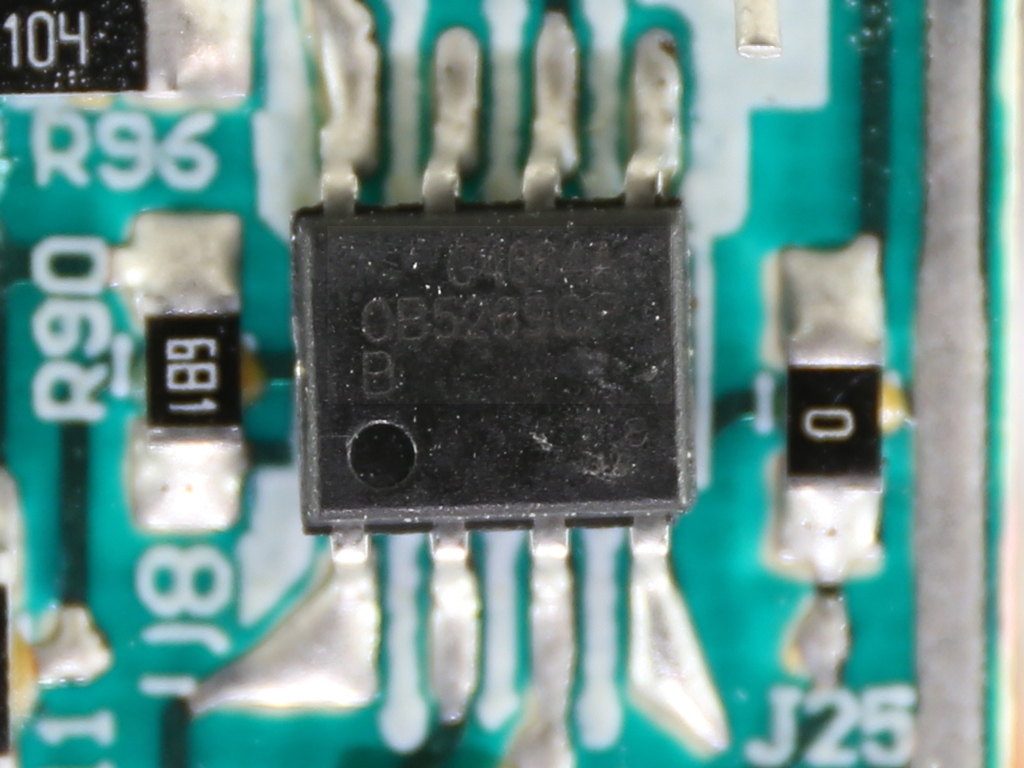
The 5VSB rail uses an MBR2045CT SBR along with a CEF04N7G FET, while the standby PWM controller is an On-Bright OB5269CP IC installed on the main PCB's solder side.
Two copper EMI shields don't offer adequate protection since they aren't grounded.


Here we have a general view of the secondary side and a close photo of the +12V island.
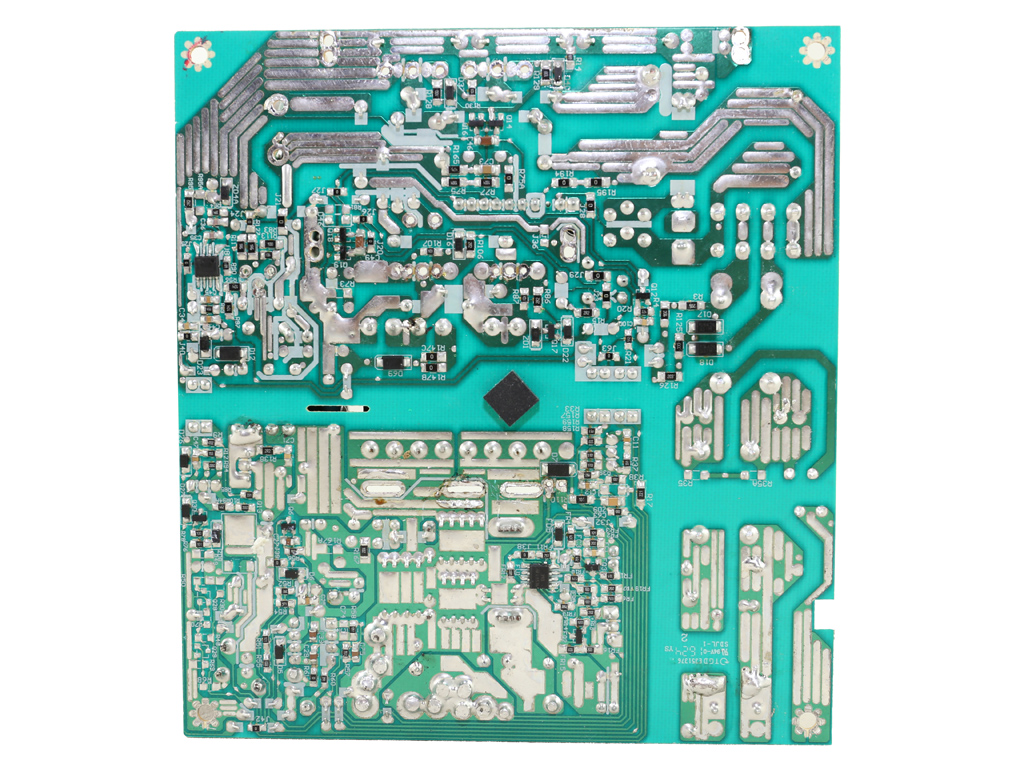
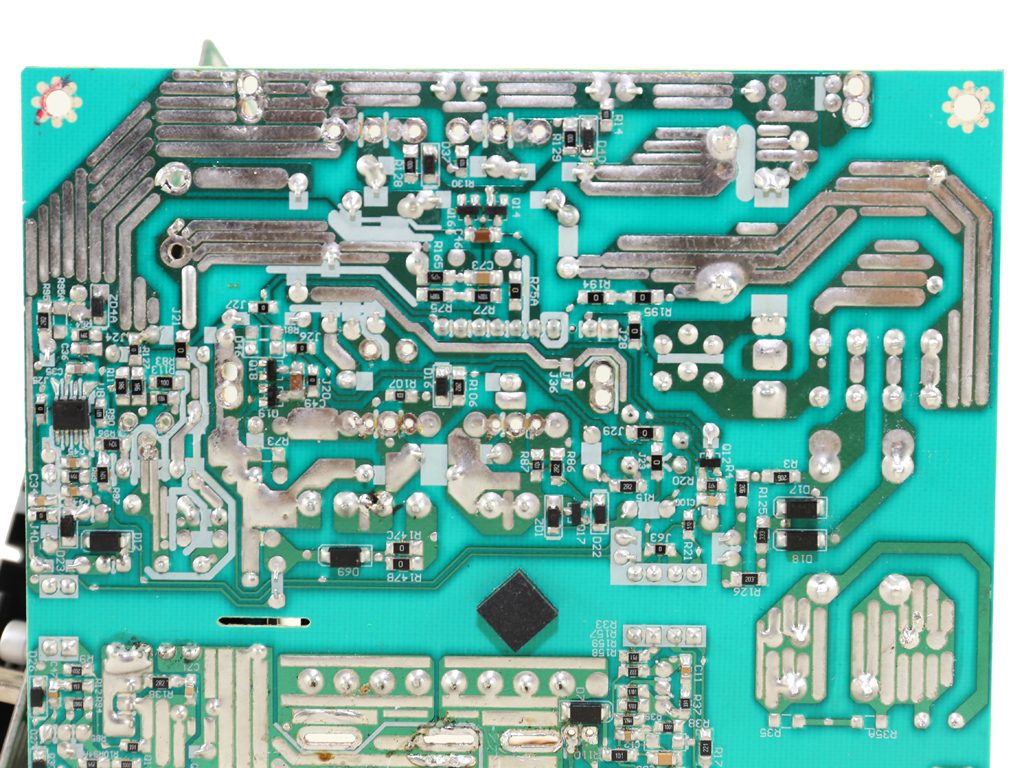
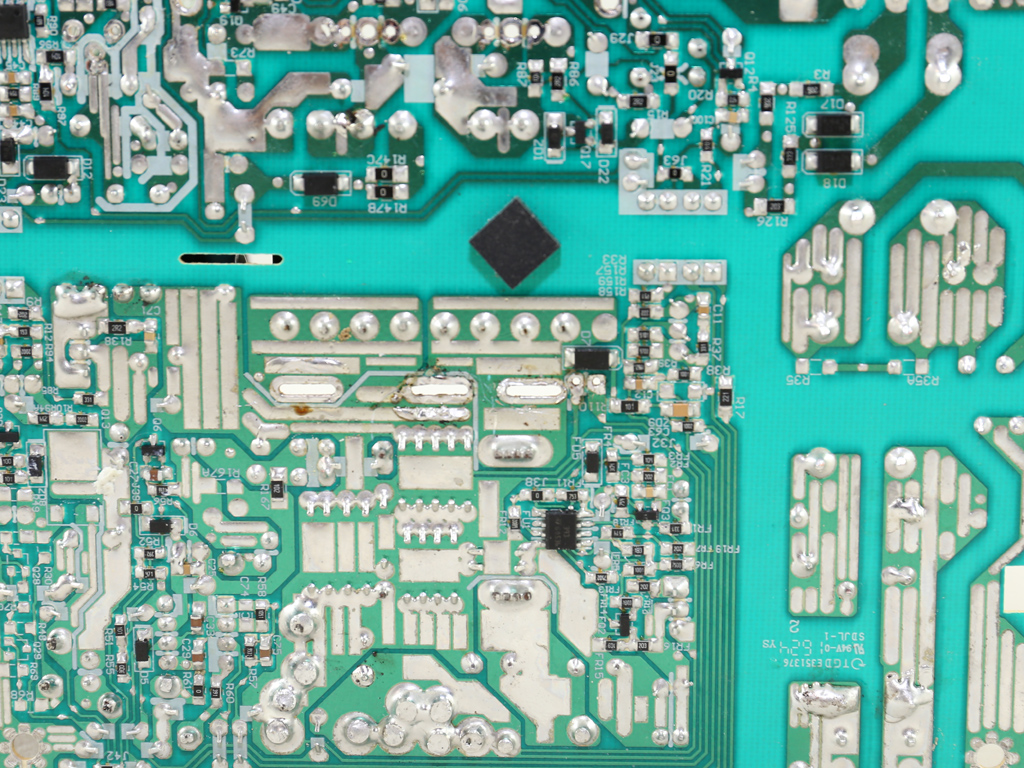
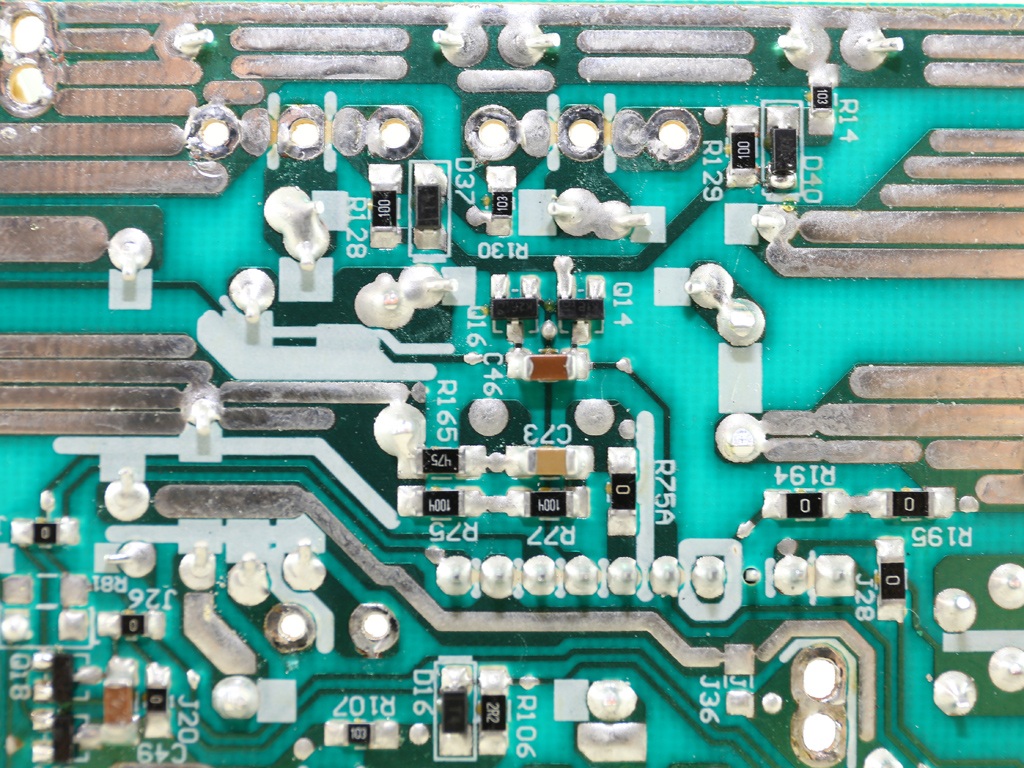

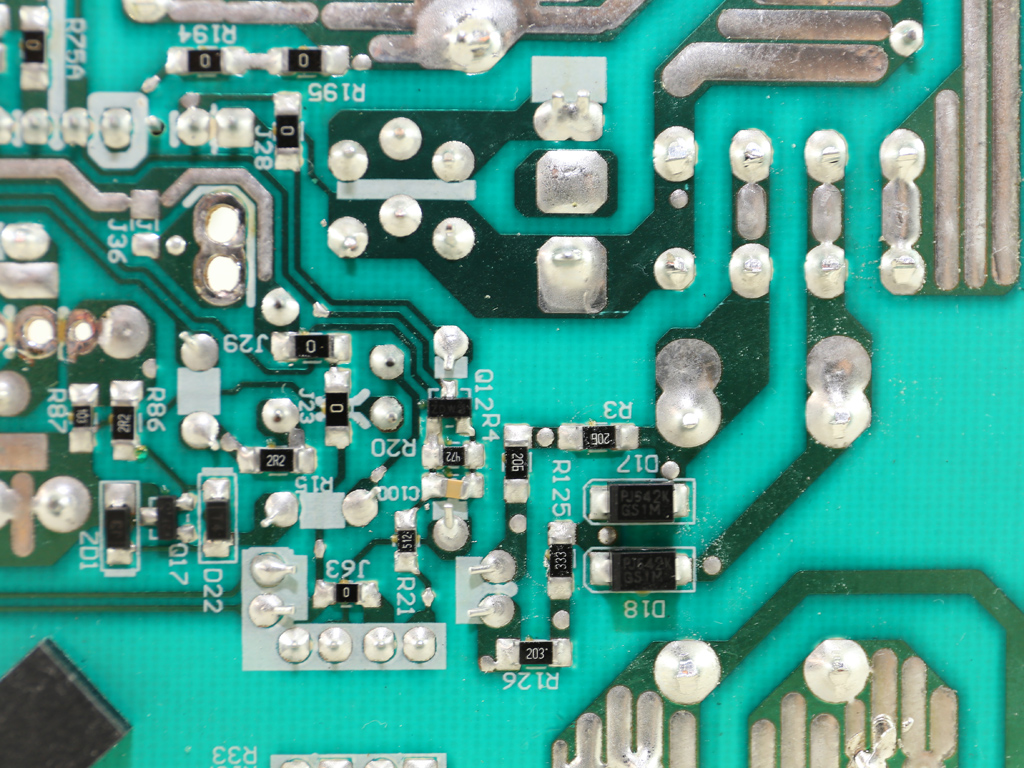
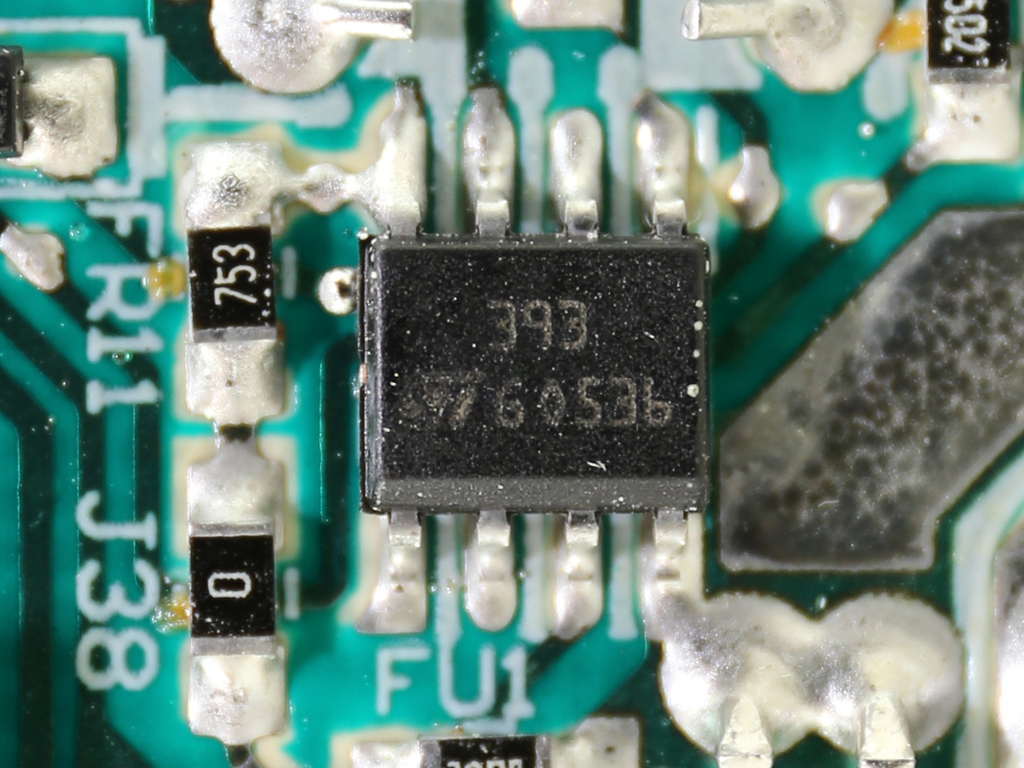
The soldering quality on the main PCB is decent. Still, we've seen much better implementations from CWT. On this side, we spot an LM393 dual-voltage comparator.
The fan is made by Yate Loon and its model number is D14SH-12 (140mm, 12V, 0.70A, 2100 RPM, 140 CFM, 48.5 dB[A]). This is a fairly strong fan that employs a sleeve bearing specified for a shorter lifetime than most double-ball bearing or fluid-dynamic bearing designs. We can't be too picky in this price range though, particularly since higher-quality fans significantly affect production costs.
Current page: A Look Inside And Component Analysis
Prev Page Packaging, Contents, Exterior, And Cabling Next Page Load Regulation, Hold-Up Time, And Inrush Current
Aris Mpitziopoulos is a contributing editor at Tom's Hardware, covering PSUs.
-
Bit early for a review,but just installed mine to replace my old one that was power surging.Reply
Very easy to install and only use the extra cables you need.
Piece of mind knowing the 3 year warranty that comes with it. -
turkey3_scratch Funny how it doesn't have OTP, when as a matter of fact, OTP was the very thing that saved the original CX750M's butt in Jonnyguru's testing; but the majority of people, rather than realizing that was a good safety measure, took it instead as "the CX750M can't do more than 650W" when in fact it was just Oklahomawolf's hot box. So maybe to avoid another mishap like this altogether they just removed OTP and cheered over the money savings at the same time?Reply
I don't care for this PSU too much anyway. It seems to be a power supply that likes to focus on good ripple (as every modern PSU does these days) and decent voltage regulation but falls short in nearly every other aspect. I don't see it being much of any improvement over the original CX750M, the whole purpose of was probably just to cut costs. I'd happily take 60mv of ripple on my 12V rail in turn for some better holdup time, a higher quality fan and perhaps caps (if those Suscons aren't the best), and OTP. -
jonnyguru It does have OTP. There's something wrong with Aris's unit and I'm going to investigate it.Reply -
JackNaylorPE I keep reading posts referencing the new CXM series, but the conclusions section which most readers skip to seem to follow Mom's advice ... "if ya don't have anything good to say, don't say anything" ... anything negative is left out. If the CX750M is going to be competitive, it has to address the elephant in the room that is the EVGA 750 B2 that sells for $50.Reply -
RCFProd Reply18929743 said:I keep reading posts referencing the new CXM series
Aren't those usually either the 450w, 550w and 650 watts? Those are different units compared to the 750 watts I think.
18929743 said:If the CX750M is going to be competitive, it has to address the elephant in the room that is the EVGA 750 B2 that sells for $50.
Plenty of better options for power supplies around CX750M's price range, must be said. Isn't the EVGA B2 750w 65 dollars? -
turkey3_scratch Ya B2 is well priced http://www.newegg.com/Product/Product.aspx?Item=N82E16817438028&cm_re=evga_750_b2%5c-_-17-438-028-_-ProductReply -
JackNaylorPE The CX450M, CX550M and CX650M were redesigned last year and manufactured by CWT using a custom Corsair design, while the CX750M (and I think the 850 model) was based upon CWTs PUQ B patform. This latest revision seems to be even newer .. and even beyond that, it appears to have changed yet again after the review samples went out as noted in the article the newer 650M's use a "470uF bulk cap but use instead a 330uF one".Reply
Note that the CXM series is reported as the lowest quality Corsair PSU available in the US.... yet several VS models remain available thru US e-tailers. One thing I have always observed, specifically with regard to PSUs and coolers is that forum posters, even when referencing an article that says the reviewed item was a "good budget model" or "good for the money, tend to drop the words "budget" and "for the money" when recommending it. So while it may be a logical choice for a G3258 or GTX 1050 build w/ no overclocking, I don't quite understand why a Hyper 212 or a CX series PSU gets recommended for a 6700k / 1070 build especially where OP states an interest in overclocking the bejeezes out of everything.
Here's the only reviews I have seen besides this one:
http://www.tomshardware.com/reviews/corsair-cx650m-psu,4770.html
http://www.jonnyguru.com/modules.php?name=NDReviews&op=Story&reid=486
18929767 said:
Aren't those usually either the 450w, 550w and 650 watts? Those are different units compared to the 750 watts I think.
Plenty of better options for power supplies around CX750M's price range, must be said. Isn't the EVGA B2 750w 65 dollars?
NCIX almost always has it for $50 in conjunction w/ Corsair MIR and instant savings... sometimes others like newegg
NCIX = $45 (Savings Code 97531-1714. SAVE $25.00 off our regular price of $89.99 Special price ends 11/30/2016 + Save $20.00 USD with manufacturer's mail-in rebate!)
http://www.ncixus.com/products/?usaffiliateid=1000031504&sku=97531&promoid=1714
newegg = $89.99 - $20 instant savings - $20.00 rebate card = $49.99
http://www.newegg.com/Product/Product.aspx?Item=N82E16817438028 -
powernod If i was short on budget i wouldn't hesitate to use Corsair's CX-M line of PSUs.Reply
Solid units for that kind of price.
I don't expect to have Seasonic PRIME 750's performance with 80$ !! -
turkey3_scratch Reply18930459 said:If i was short on budget i wouldn't hesitate to use Corsair's CX-M line of PSUs.
Solid units for that kind of price.
I don't expect to have Seasonic PRIME 750's performance with 80$ !!
If I needed 750W and it was between the EVGA 750 B2 and the CX750M, I'd probably take the former.

